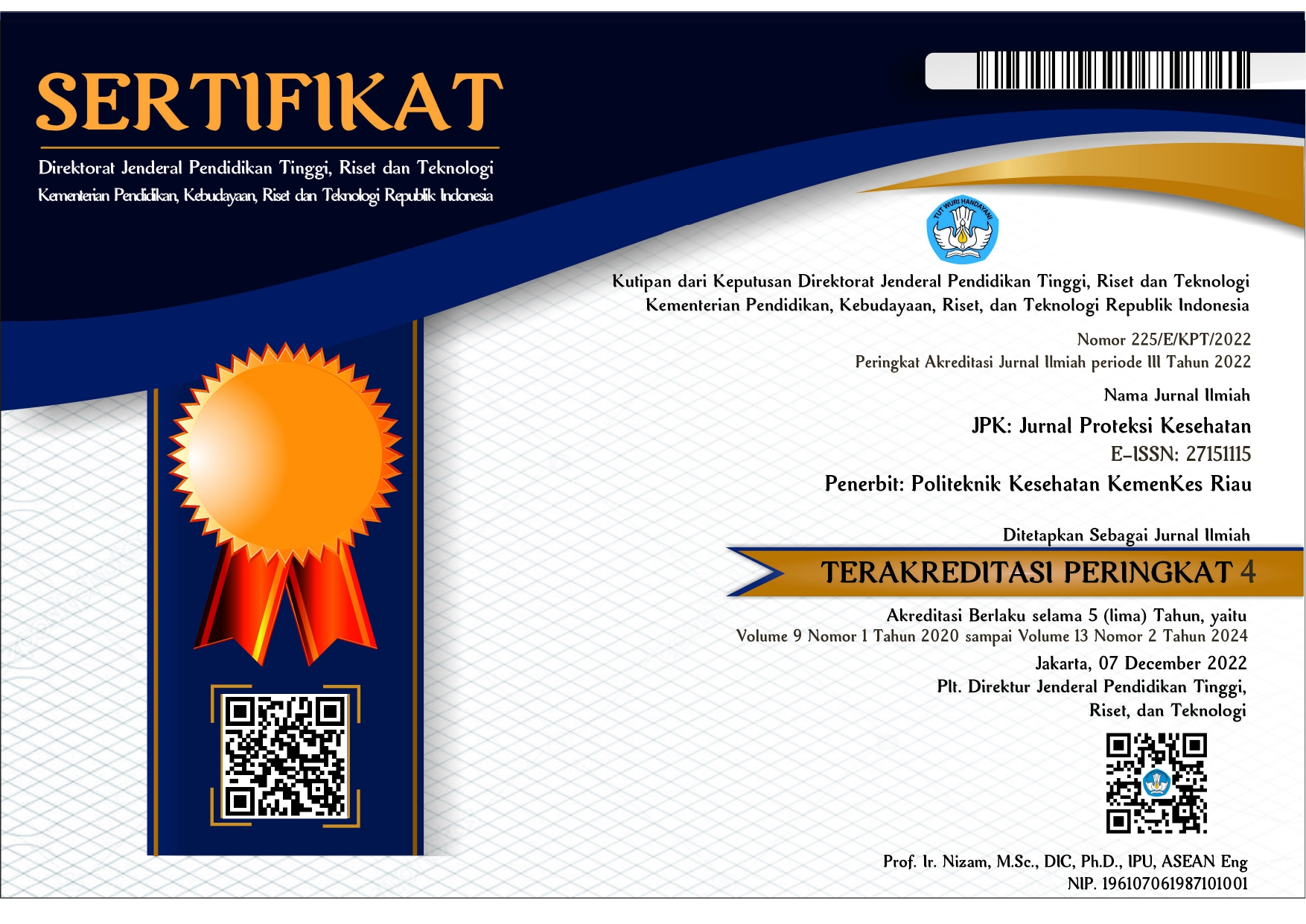The The Correlation between Parenting and Stunting in Pematang Reba Subdistrict, in the Working Area of the Pekan Heran Public Health Center, Indragiri Hulu Regency
The Correlation between Parenting and Stunting in Pematang Reba Subdistrict, in the Working Area of the Pekan Heran Public Health Center, Indragiri Hulu Regency
Abstract
Stunting is a condition of failure of growth in children caused by chronic malnutrition, especially in the first 1000 days of life so that the child is too short for their age, the condition of stunting only appears after the child is 2 years old. Stunting occurs due to chronic malnutrition caused by poverty and improper parenting, resulting in underdeveloped cognitive abilities, prone to illness, and low competitiveness so that they can be trapped in poverty. Several factors are related to the case of stunting, such as parental characteristics, namely education, employment, income and parenting manners.
This research is a quantitative study with a cross sectional approach, with a total sample of 70 people. This study aims to determine the relationship between maternal parenting and the case of stunting in children in the working area of Pekan Heran Public Health Center, Rengat Barat District, Indragiri Hulu Regency.
Based on the statistical test, the results of the study showed that there was a significant relationship between the case of stunting and parenting with a p value of 0.003, and of the 70 respondents, the largest proportion of parenting was democratic parenting as many as 46 respondents (75.7%), and there were 11 stunted children (15.7%).
References
[2] Ramayulis, R., dkk, Stop stunting dengan konseling gizi, Jakarta: Penebar swadaya grup, Second edition, USA : Mosby, Inc, 2018
[3] Dinas Kesehatan Indragiri Hulu, Jumlah Penderita Stunting di Indragiri Hulu, 2017
[4] Ariani, Metode Penelitian Kebidanan dan Kesehatan Reproduksi, Yogyakarta: Nuha Medika, 2014
[5] Rahmayani Sitorus, Hubungan anatara Pola Asuh demokratis dengan perilaku asertif pada remajadi SMA Swasta Muhammadiyah 2 Medan, 2016
[6] MCA Indonesia, B., Awaludin, Analisis bagaimana mengatasi permasalahan stunting di Indonesia, Berita Kedokteran Masyarakat, Vol 35 No 4, ISSN 2614-8412, 2019
[7] Dini, Atika Layyin, 2019, HUbungan Pola Asuh dengan kejaian Stunting pada Balita usia 24-59 bulan di Wilayah Kerja Puskesmas Sumowono Kabupaten Semarang Tahun 2019
[8] Haspara, Habib Rachmat, Penguatan Upaya Kesehatan Masyarakat Dan Pemberdayaan Masyarakat Bidang Kesehatan di Indonesia, Yogyakarta: Gadjah Mada University Press, 2017
[9] Kemenkes RI, Riset Kesehatan Dasar Tahun 2018, Diakses pada tanggal 2 Januari 2019. Diperoleh dari: http://www. Depkes.go.id/resources/download/general/Hasil%20Riskesdas%20, 2018
[10] Buchari, L., Metode Penelitian Kesehatan, Jakarta: Yayasan Pustaka Obor Indonesia, 2013
[11] Notoatmodjo, Metodologi Penelitian Kesehatan. Jakarta: Rineka Cipta, 2012
[12] PERSAGI, Stop Stunting Dengan Konseling Gizi, Jakarta: Penebar Plus, 2018
[13] Suarsini, D., Pola Asuh Orang Tua, Artikel (online)(http;//desysuar.blogspot .com, diakses 10 Desember 2013, 2013
[14] Sujarweni, V., Wiratna, Metode Penelitian: Lengkap, Praktis, dan Mudah Dipahami, Yogyakarta: Pustaka Baru Press, 2014
[15] Sumantri, A., Metodologi Penelitian Kesehatan. Jakarta: Prenada Media, 2011
[16] Khasanah, U., Hubungan Pola Asuh Dan Karakteristik Keluarga Dengan Status Gizi Pada Anak Usia Sekolah Di SD Negeri Kelurahan Tugu, Kota Depok, 2012












